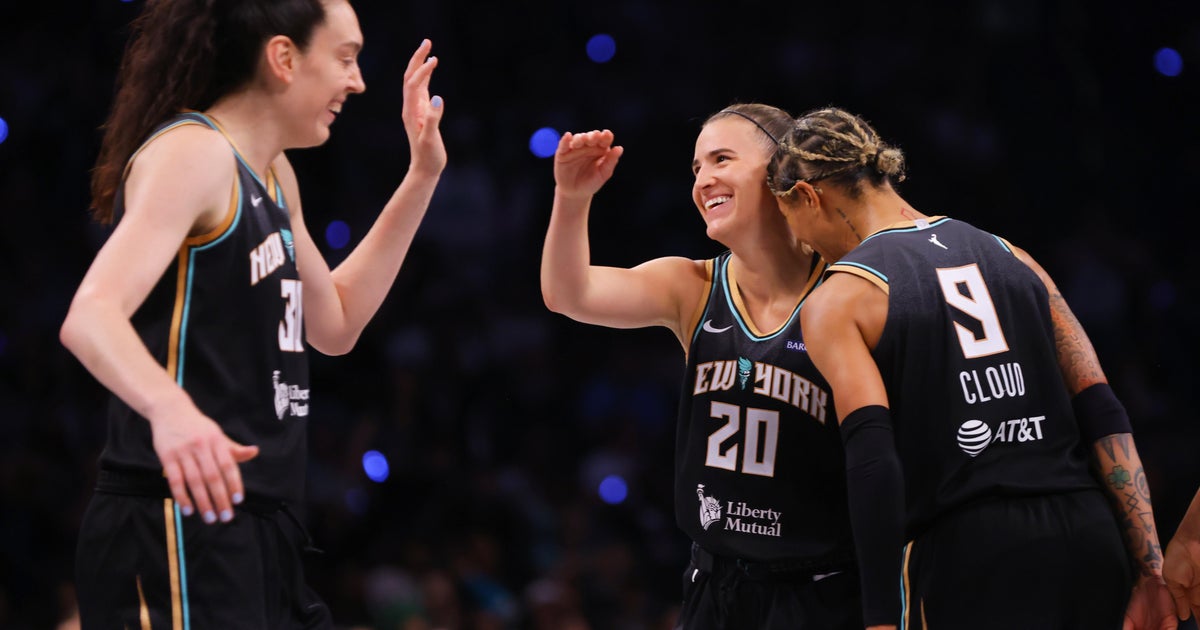Burns: At Citi Field, A Garden Grows
By James H. Burns
» More Columns
When visiting Citi Field, the Mets' home ballpark in Flushing, Queens, it might well be worth your while -- as often, in life -- to stop and smell the flowers.
Unbeknownst to many fans, a new garden has been flourishing for quite a while now in "Mets Plaza." Many folks, in their happy rush to get to the game, walk right by what can be viewed as a nearly magical enclave, located just inside the Roosevelt Avenue gate and before the Shea Stadium "Home Run Apple."
While the new flora is a surprise to many, one could suggest that to some degree it is carrying on a tradition.
For once upon a time, the Mets were famous for having a garden in the bullpen. And not just because they "cultivated" such remarkable homegrown talent as Tom Seaver, Jerry Koosman, Jon Matlack, Dwight Gooden, Nolan Ryan and Tug McGraw! (Nor should such masters of the mound as Sandy Koufax, Bob Gibson and Steve Carlton -- who would work out only a short walk away in the visitor's bullpen -- be overlooked. Newly elected Hall of Famer Pedro Martinez, of course, graced both warmup sections.)
During the Mets' "amazing" 1969 season, when they went from never having had a winning record to gaining a World Series championship, bullpen coach Joe Pignatano found a wild tomato plant somehow growing beyond Shea's right-field fence.
Pignatano told historian Paul Hirsch for the Society of American Baseball Research (SABR) Biography Project: "We got some tomatoes off it, but most important, we won the whole thing. After that, I kept up the garden as long as I was with the Mets, as a good luck charm."
Pignatano is a Brooklyn native, and a former Dodger, who joined the Mets when the club traded with the Chicago White Sox for their manager, Gil Hodges, before the 1968 season. Hodges brought his coaching staff with him, including Pignatano, pitching coach Rube Walker and third-base coach Eddie Yost.
Ultimately, Pignatano's patch, according to The New York Times, evolved into a 30-foot long plot, and he grew eggplants, lettuce, pumpkins, radishes, squash and zucchini. When he left the Mets after the 1981 season, the small field was intermittently tended by a variety of personnel. (Including, reportedly, Vern Hoscheit, who was the bullpen coach from 1984-87, which was highlighted by the club's last World Series championship in 1986.)
"The Ultimate Baseball Road Trip," a book by Josh Pahigian and Kevin O'Connell, states that for Shea Stadium's last 16 years, the garden was tilled by groundskeeper Chris Murphy (perhaps, at times, under the purview of Shea's legendary head groundsman, Pete Flynn).
Although Citi Field has yet to embrace Pignatano's legacy and seed a new vegetable garden, Mets officials say that flowers have always been a part of the ballpark's exterior since the stadium opened in 2009. But two years ago, they say, a new horticulturist was enlisted to revitalize the asphalt pasture.
To be sure, there are flowers at the front of the parking lot closest to the third base side of the stadium (just beyond where Shea's outfield walls used to be), as well as an attractive garden near the 126th Street entrance, and another near the press entrance to the stadium.
There are also what appears to be gigantic circular concrete planters throughout Mets Plaza, just across from Citi Field's Rotunda (the ballpark's main approach). Sitting along the waist-high ledge of these constructs is probably Citi Field's most popular pregame meeting place.,
But what makes the new garden, amidst the Plaza, so unique is that it has a path.
Perhaps it's the sudden beauty, and seeming solitude, next to all the usual, joyful commotion, that makes the garden appear so otherworldly.
Simply the idea of having such a tableau -- can it be called "The Mets-Boretum"? -- has an innate charm, and shows a welcome, if unexpected, sense of whimsy on behalf of ownership.
The garden, in fact, can seem a bit more enchanted at twilight, when birds frolic in the foliage, and their song lingers in the branches overhead.
On some nights, it's possible to feel a sudden chill.
For older devotees, it could be the memory of the World's Fairs that were once so close to this hidden glen. From 1939-40 and 1964-65, Flushing Meadows hosted the spectacular expositions, which, in part, celebrated the beneficent intersection of nature and technology. (Inside Citi Field, the left field ramp -- which goes to the top of the ballpark -- offers other beautiful views that many fans are unaware of: the Manhattan skyline and the bridges to the west and north, and towards the south, the 1964 Fair's remaining constructs, and where two rockets still peek out from above the trees.)
Or the unanticipated cool could simply be a pleasant breeze from Flushing Bay.
A famous poem by Dorothy Francis Gurney proposes, "One is nearer God's heart in a garden than anywhere else on earth."
It is the promise of a similar solace and grace, of course, that some people find in the best days of baseball.
James H. (Jim) Burns is a writer/actor living in Long Island.



